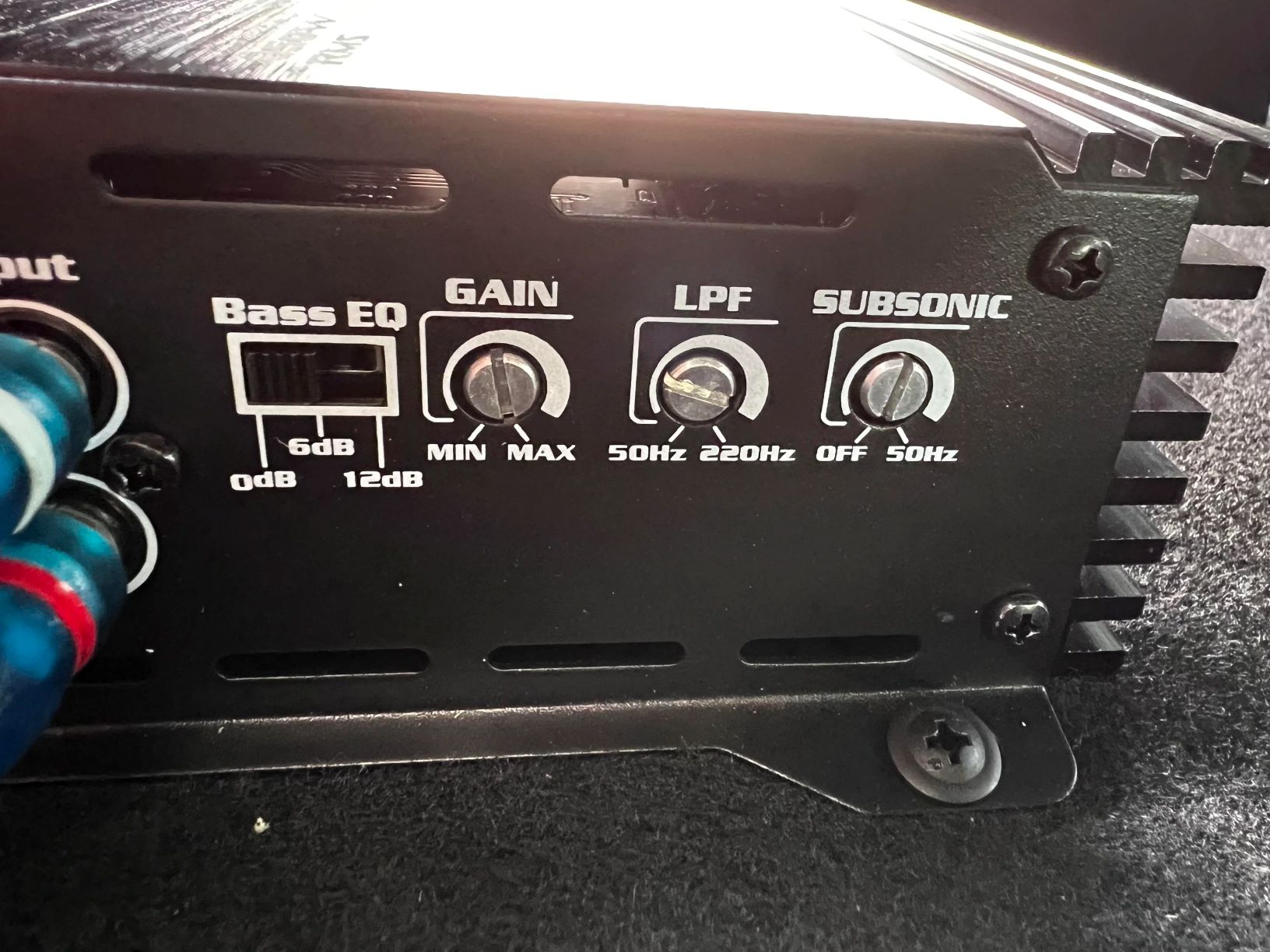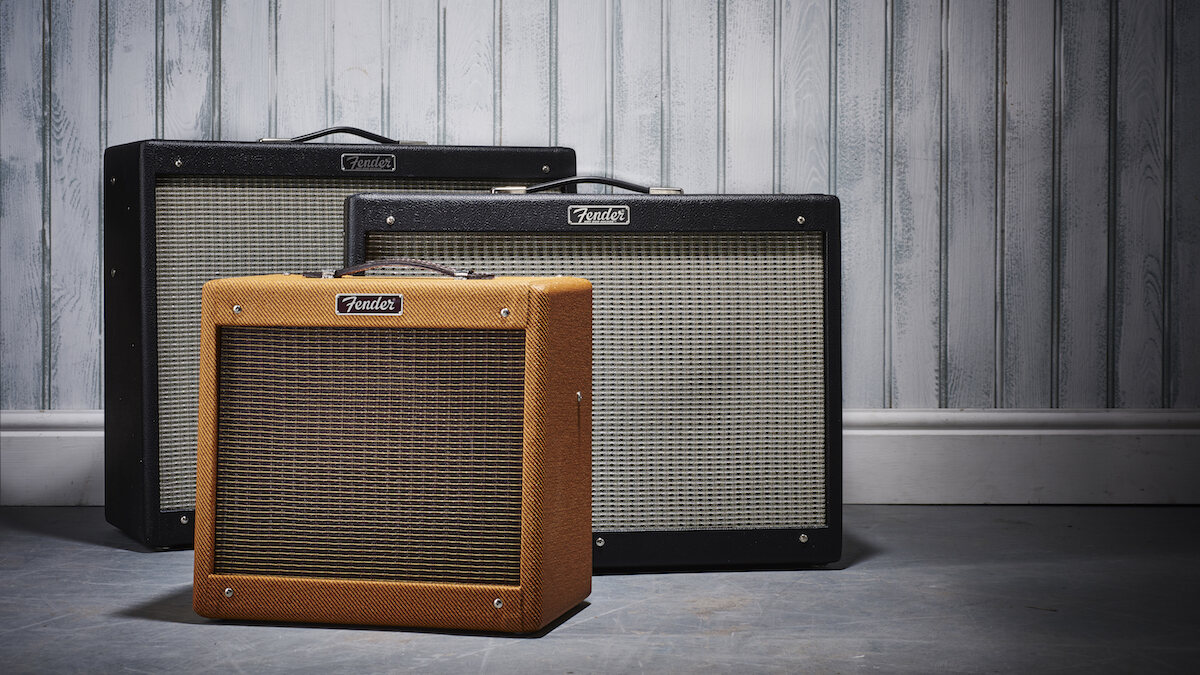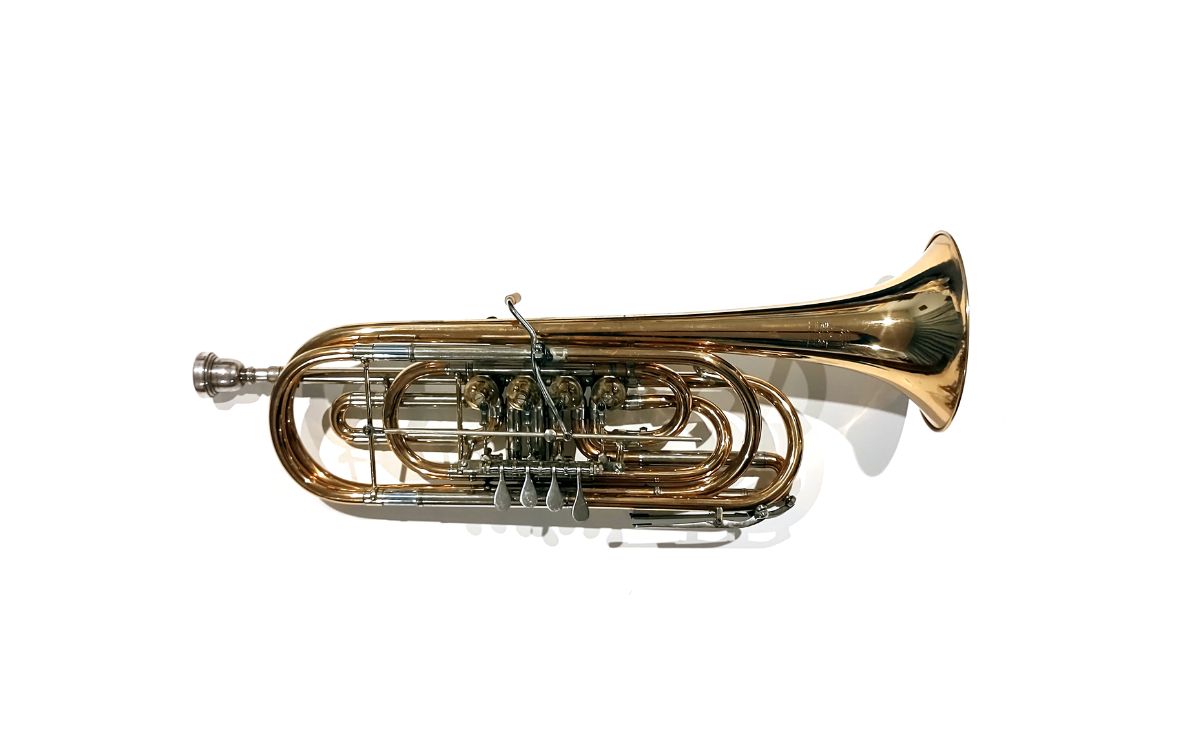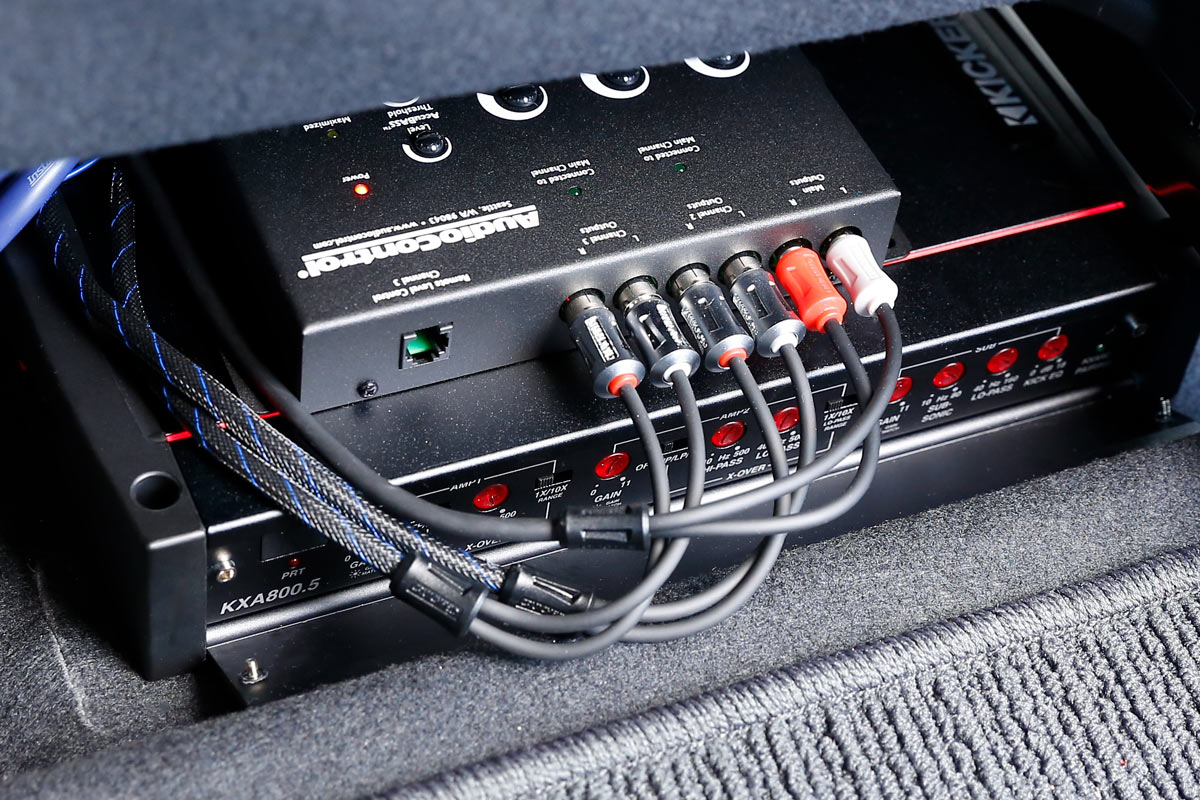Home>Instruments>Bass>How To Use A Bass Amp
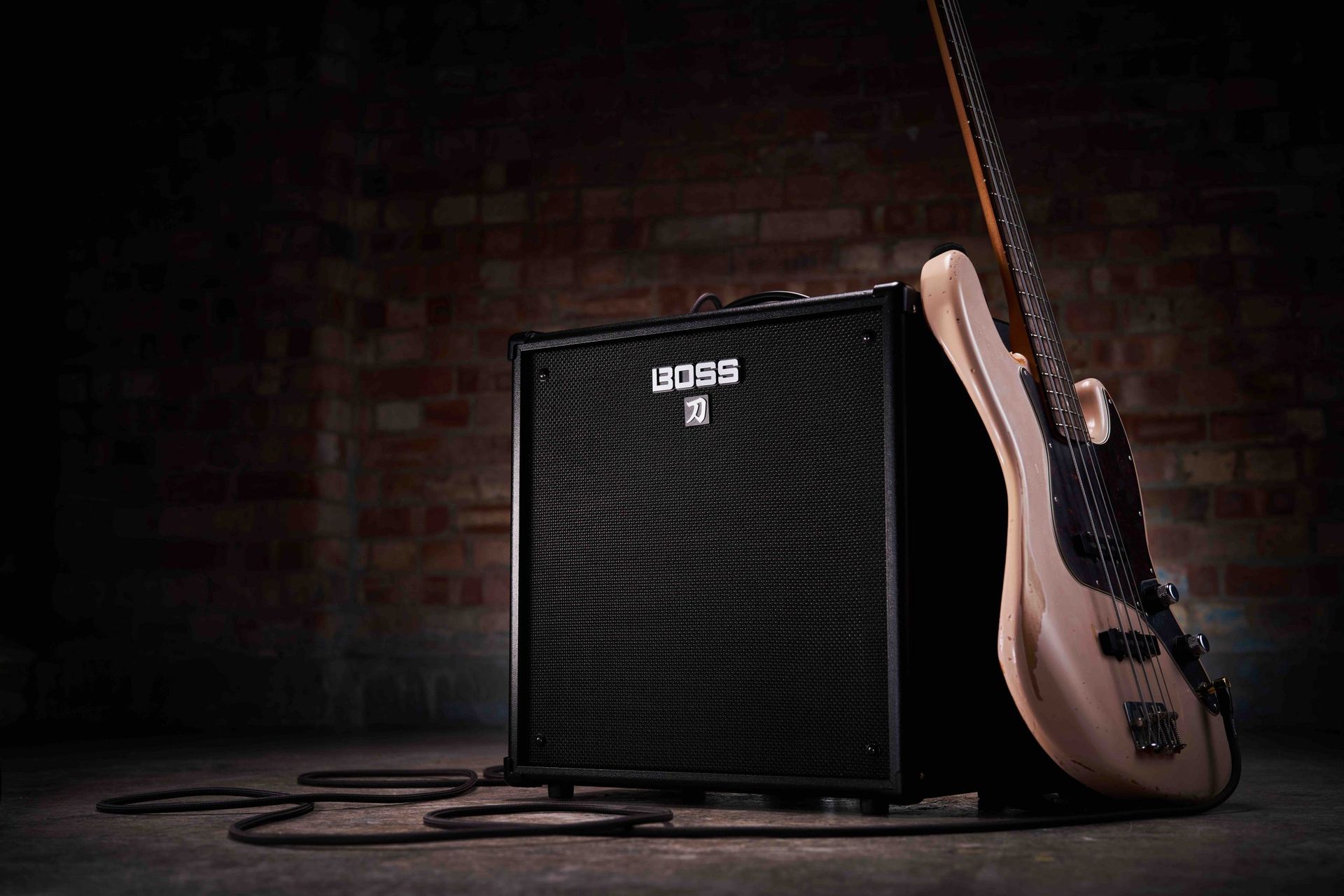

Bass
How To Use A Bass Amp
Modified: January 22, 2024
Learn how to effectively use a bass amp for your bass guitar, with expert tips and techniques to enhance your sound and performance.
(Many of the links in this article redirect to a specific reviewed product. Your purchase of these products through affiliate links helps to generate commission for AudioLover.com, at no extra cost. Learn more)
Table of Contents
Introduction
Welcome to the world of bass amplifiers! If you’re a bassist, you know how important it is to have a great amp to amplify and enhance your bass guitar’s sound. A bass amp is not just a simple tool to make your bass guitar louder; it is an essential component in shaping your tone and bringing your music to life.
In this article, we will guide you through the ins and outs of using a bass amp. Whether you’re a beginner trying to understand the basics or an experienced player looking to refine your skills, we’ve got you covered. From setting up your bass amp to adjusting the EQ controls, applying effects, exploring different tones, and troubleshooting common issues, we will provide you with the necessary knowledge to make the most out of your bass amp.
Using a bass amp effectively requires a combination of technical know-how and experimentation. It’s an art that involves understanding the different components of your amp, such as the EQ controls, gain and volume knobs, and the intricacies of various effects and pedals. With the right techniques and a bit of creativity, you can unlock a world of possibilities and craft your own unique bass sound.
Whether you’re playing live gigs, jamming with friends, or recording in the studio, getting the most out of your bass amp will elevate your playing and make you stand out from the crowd. So, without further ado, let’s dive into the world of bass amps and discover the secrets to unlocking your bass guitar’s true potential.
Understanding the Bass Amp
Before diving into how to use a bass amp, it’s important to have a solid understanding of its basic components and how they work together to shape your sound. A bass amp consists of several key elements that contribute to the overall tone and character of your bass guitar:
- Preamp: The preamp is the section of the amp that processes the incoming signal from your bass guitar before sending it to the power amp section. It controls the gain, tone, and volume of your bass signal.
- EQ Controls: Most bass amps come equipped with EQ controls, including bass, mid, and treble knobs. These controls allow you to shape the frequency response of your bass, allowing you to boost or cut specific frequencies to achieve your desired tone.
- Power Amp: The power amp is responsible for amplifying the signal from the preamp so that it can drive the speakers. It determines the overall volume and power output of your bass amp.
- Speaker(s): The speakers are where the amplified sound is projected. Bass amps typically have one or more speakers, and the choice of speaker(s) can greatly affect the overall sound and bass response.
Another important concept to understand is the difference between solid-state and tube (valve) bass amps. Solid-state amps use transistors and integrated circuitry to amplify the signal, while tube amps use vacuum tubes. Solid-state amps tend to be more affordable and reliable, while tube amps are known for their warm, vintage tone and natural compression.
It’s essential to familiarize yourself with the specific features and controls of your bass amp. Different models and brands may have their own unique functions and settings. Reading the user manual can provide valuable insights into your amp’s capabilities and help you make the most of its potential.
Remember, the key to understanding your bass amp is experimentation. Take the time to play around with different settings and configurations, and listen to how each adjustment affects your sound. Through trial and error, you’ll develop a deeper understanding of your amp’s capabilities and unlock the full potential of your bass guitar.
Setting Up Your Bass Amp
Properly setting up your bass amp is crucial to achieving the best sound quality and performance. Here are the steps to follow when setting up your bass amp:
- Positioning: Start by finding the right placement for your amp. Generally, it’s best to position it on the floor with the speakers facing at ear level. This allows for optimal sound projection and clarity.
- Connectivity: Ensure that all cables are securely connected. Use a high-quality instrument cable to connect your bass guitar to the input jack of the amp. If you’re using additional effects or pedals, connect them to the appropriate inputs and outputs of your amp.
- Power On: Before powering on your bass amp, make sure the volume and gain controls are set to zero. This prevents any sudden blasts of sound and potential damage to your equipment.
- Power Settings: Adjust the power settings based on your playing environment. If you’re practicing at home, a lower wattage setting should suffice. For gigs or larger venues, you may need to increase the power for greater volume and projection.
- Warm-up Time: Allow your amp to warm up for a few minutes before playing. This ensures that the tubes (if you have a tube amp) reach their optimal operating temperature for the best sound quality.
- Volume Control: Set the master volume to a comfortable level. Start low and gradually increase the volume as you play to avoid any sudden loud surprises or potential distortion.
Once your bass amp is properly set up, take a moment to familiarize yourself with the various controls and knobs on the front panel. These controls control the overall tone, EQ, and volume of your bass amp. Experiment with them to find the sweet spot that suits your playing style and desired sound.
Remember, setting up a bass amp is not a one-size-fits-all process. The optimal settings will vary depending on your musical preferences, playing style, and the venue or environment in which you are performing. Don’t be afraid to experiment and adjust the settings to achieve the best sound for your specific needs.
Once you’ve completed the setup process, you’re ready to start exploring the incredible tones and possibilities that your bass amp has to offer. In the next sections, we will delve deeper into adjusting the EQ controls, using the gain and volume knobs, applying effects and pedals, and discovering different tones and sounds.
Adjusting the EQ Controls
The EQ (Equalizer) controls on your bass amp allow you to shape the tonal characteristics of your bass guitar. Understanding how each EQ control works and how to adjust them effectively can make a significant difference in achieving your desired tone. Here’s a breakdown of the common EQ controls found on many bass amps:
- Bass: The bass control adjusts the low-frequency response of your bass guitar. Increasing the bass knob adds more low-end presence and can make your bass sound heavier. Decreasing the bass knob can reduce boominess or muddiness in your sound.
- Mid: The mid control adjusts the midrange frequencies of your bass. Increasing the mid knob adds more punch and definition to your sound, making it more prominent in the mix. Decreasing the mid knob can give your sound a smoother or softer tone.
- Treble: The treble control adjusts the high-frequency response of your bass guitar. Increasing the treble knob adds more brightness and crispness to your sound, making it cut through the mix. Decreasing the treble knob can reduce harshness or sibilance in your sound.
- Preset EQ: Some bass amps offer preset EQ settings, such as “scooped mids” or “slap mode,” which instantly adjust the EQ controls to popular settings used for specific playing styles or genres. These can be a great starting point, but remember to tweak them to fit your personal preference.
When adjusting the EQ controls, it’s important to approach it in a systematic way. Start with all controls set to the 12 o’clock position (neutral) and play a few notes on your bass guitar. Listen to how your sound blends with the rest of the instruments and make subtle adjustments to taste.
Keep in mind that the EQ controls interact with each other, so changes you make to one can affect the others. For example, boosting the bass control may also increase the low-mid frequencies, and cutting the treble control may reduce the high-mid frequencies. Take the time to experiment with different combinations to find the perfect balance for your sound.
It’s worth noting that the right EQ settings will vary depending on your playing style, musical genre, and the specific sound you’re aiming for. For example, genres like funk or slap bass might benefit from a scooped midrange, while genres like jazz might require a more balanced EQ profile. Don’t be afraid to experiment and trust your ears to guide you towards the sound that suits your music.
Lastly, remember that the room or venue you’re playing in can also influence the way your bass amp sounds. Take the time to adjust your EQ settings according to the acoustics of the space to achieve the best possible sound.
By understanding and utilizing the EQ controls on your bass amp effectively, you can tailor your tone to suit any musical style and have a more satisfying playing experience.
Using the Gain and Volume Controls
The gain and volume controls on your bass amp play a crucial role in shaping your sound and managing the overall output level. Understanding how to use these controls effectively will allow you to achieve the desired tone and volume for your playing situation. Let’s take a closer look at each control:
Gain:
The gain control on your bass amp adjusts the input level of your bass signal. It determines the amount of preamp distortion or saturation you want in your sound. Increasing the gain adds more grit and overdrive to your tone, which is ideal for rock and heavier genres. Decreasing the gain keeps your sound cleaner and more transparent.
When setting the gain, start with it set at a low level. Gradually increase it while playing your bass until you achieve the desired level of distortion or saturation. Be careful not to set it too high, as excessive gain can introduce unwanted noise and distortion to your sound. You want to find the sweet spot where your tone is warm and rich without sacrificing clarity.
Volume:
The volume control on your bass amp adjusts the overall output level of your bass signal. It determines how loud or soft your sound will be. Once you have set your desired gain level, you can use the volume control to adjust the overall volume to fit the specific situation you are playing in.
When using the volume control, it’s essential to consider the context in which you are playing. For example, in a live performance, you may need to increase the volume to cut through the mix and be heard clearly. In a practice or studio setting, you may want to keep the volume lower to avoid overpowering other instruments. Use your ears and adjust the volume accordingly to achieve the desired balance.
It’s important to note that the gain and volume controls are interconnected. Increasing the gain will also increase the output level, while decreasing the gain will decrease the output level. Balancing these controls allows you to fine-tune your tone and volume to suit your preferences and the needs of the music you’re playing.
Experimentation is key when using the gain and volume controls on your bass amp. Take the time to play around with different settings to find the right balance for your sound. Remember that the optimal settings will depend on your playing style, the genre of music you’re playing, and the room or venue you’re performing in.
By understanding how to effectively use the gain and volume controls on your bass amp, you can achieve a dynamic and expressive sound that elevates your playing and captures the essence of your music.
Applying Effects and Pedals
Adding effects and pedals to your bass guitar setup can greatly expand your sonic possibilities and allow you to create unique and captivating sounds. Whether you’re looking to add some subtle modulation or unleash wild and experimental tones, understanding how to apply effects and pedals on your bass amp is essential. Here are some key tips to get you started:
Signal Chain:
The signal chain refers to the order in which you connect your effects and pedals. In general, it’s best to start with dynamics-based effects like compressors or noise gates, followed by modulation effects like chorus, flanger, or phaser. Next, you can add time-based effects such as delay or reverb. Finally, you may want to experiment with distortion or overdrive pedals for added grit and punch.
Experimenting with different signal chain configurations can yield unique results, so don’t be afraid to rearrange your pedals and see how it impacts your overall sound.
Effect Settings:
Each effect or pedal will have its own set of controls for adjusting parameters such as intensity, speed, depth, or mix. Take the time to understand how each control affects the sound and experiment with different settings to achieve the desired effect.
It’s important to strike a balance between using effects to enhance your sound and overwhelming it. Be mindful of not drowning out the natural tone of your bass guitar. Start with subtle settings and gradually increase them to find the right level of effect without losing the essential character of your instrument.
Blend and Wet/Dry Mix:
Some effects, like chorus or delay, offer a blend or wet/dry mix control. This allows you to balance the level of the affected (wet) signal with the original (dry) signal. Experimenting with different blend or mix settings can help retain clarity and definition while still adding the desired effect.
Expression and Footswitch Controls:
Many effects and pedals come equipped with expression or footswitch controls, giving you real-time control over specific parameters or the ability to toggle effects on and off. Utilizing these controls can add a dynamic element to your playing and give you more flexibility in shaping your sound.
Remember that using effects and pedals is a personal artistic choice. There are no hard and fast rules, so don’t be afraid to experiment and trust your ears. Take the time to explore different combinations, settings, and techniques to find the effects that best complement your playing style and musical vision.
When adding effects and pedals to your bass amp, it’s important to ensure that your amp and pedals are compatible in terms of impedance and power requirements. Additionally, invest in high-quality cables and consider using a power supply to minimize noise and ensure reliable performance.
With the right selection and application of effects and pedals, you can unleash your creativity and take your bass playing to a whole new level. Experiment, have fun, and let your imagination run wild!
Exploring Different Tones and Sounds
One of the most exciting aspects of using a bass amp is the ability to explore and create a wide range of tones and sounds. By experimenting with different settings and techniques, you can discover unique sonic landscapes and truly make your bass guitar stand out. Here are some tips for exploring different tones and sounds on your bass amp:
Playing Techniques:
Start by experimenting with various playing techniques, such as fingerstyle, slap and pop, or using a pick. Different techniques can produce distinctive tones, so it’s worth exploring different approaches to find the sound that resonates with you.
EQ Settings:
Adjusting the EQ controls on your bass amp is a powerful way to shape your tone. Try boosting the bass control for a deep and warm sound, or cutting the mids for a scooped and punchy tone. Experiment with different combinations and settings to achieve the desired tonal characteristics for your music.
Pickup Selection:
If your bass guitar has multiple pickups, try switching between them to explore different tonal options. The neck pickup tends to produce a round and warm sound, while the bridge pickup delivers a brighter and more aggressive tone. Finding the right pickup combination for specific musical styles or passages can add depth and versatility to your sound.
Effects and Pedals:
As mentioned in the previous section, incorporating effects and pedals into your setup can offer endless possibilities for sonic exploration. Experiment with different effects like chorus, reverb, or distortion, and adjust the settings to find the perfect combination that complements your playing style and desired sound.
Amplifier Settings:
Don’t limit yourself to the default settings on your bass amp. Take the time to experiment with the amp’s additional features, such as built-in overdrive or amp modeling options. These can provide a wide range of tonal variations and allow you to emulate different amplifier types or characters.
Playing with Dynamics:
Varying your playing dynamics can significantly impact your tone. Experiment with playing softer or harder, and focus on how it affects the overall sound. Playing softly can create a mellow and laid-back mood, while digging in with more intensity can produce a powerful and aggressive tone.
Remember that exploring different tones and sounds is an ongoing journey. There are no right or wrong choices, only the sounds that resonate with you and enhance your musical expression. Trust your ears, be open to new ideas, and enjoy the process of discovering your unique bass sound.
Lastly, don’t forget to listen to and study the bassists you admire. Pay attention to their tone and technique, and try to incorporate elements of their style into your own playing. This can provide inspiration and help you develop your personal voice as a bassist.
By embracing experimentation and continuously pushing the boundaries of your bass amp, you’ll unlock a world of possibilities and create captivating tones that will captivate listeners and elevate your playing to new heights.
Troubleshooting Common Issues
While using a bass amp can bring immense joy and satisfaction, it’s not uncommon to encounter issues along the way. Fortunately, many common problems can be resolved with a little troubleshooting. Here are some common issues you may encounter with your bass amp and how to address them:
No Sound:
If you’re not getting any sound from your bass amp, start by checking the basics. Ensure that your bass guitar is properly plugged in and that the volume and gain controls on your amp are set to an audible level. Also, make sure that your cables are in good condition and properly connected. If these steps don’t solve the issue, try plugging your bass guitar into a different amp or using a different cable to rule out any equipment faults.
Excessive Noise or Hum:
If you’re experiencing unwanted noise or hum from your bass amp, there are a few things you can try. First, check for any loose connections or faulty cables. Try moving your amp and cables away from other electronic devices or sources of electromagnetic interference. Using a power conditioner or a separate power outlet can also help reduce noise. If the issue persists, it may be worth considering getting your amp inspected by a professional technician.
Distorted or Harsh Tone:
If your bass amp is producing a distorted or harsh tone, start by adjusting the gain and volume controls. Too much gain can cause clipping and distortion, so try reducing the gain level. Additionally, check your EQ settings. Cutting the treble or adjusting the midrange can help to soften a harsh tone. If you’re using effects or pedals, make sure they are set appropriately and not introducing unwanted distortion. Finally, check your bass guitar’s pickups and make sure they are functioning properly.
Inconsistent Volume Levels:
If you’re experiencing fluctuations in volume levels, particularly during playing, there are a few things you can check. Start by inspecting your cables for any damage or loose connections. Ensure that your bass guitar’s output jack is clean and properly inserted. If you’re using effects or pedals, make sure their settings are consistent. In some cases, a faulty volume potentiometer on your bass guitar may cause volume inconsistencies, so consider having it inspected or replaced if necessary.
Overheating:
If your bass amp is overheating during use, it may be an indication of an underlying issue. Ensure that the amp is properly ventilated and not placed in a confined space. Check that the cooling fans are functioning properly and not obstructed by dust or debris. If the problem persists, it’s best to have your amp inspected by a qualified technician to prevent any potential damage.
Low Output:
If your bass amp’s output is unusually low, first check that all volume controls, including those on your bass guitar, are properly adjusted. Make sure your amp’s settings, such as gain and volume, are appropriately configured for the desired output level. Ensure that your bass guitar’s battery (if applicable) is not running low, as this can affect the output signal. If the problem persists, it may be worth checking your amp’s power tubes (if you have a tube amp) or having the amp inspected for any potential issues.
Remember, if you’re unsure about addressing any issues with your bass amp, it’s always a good idea to consult a professional technician who can diagnose and resolve any potential problems. Proper maintenance, regular cleaning, and careful handling can also minimize the occurrence of common issues and keep your bass amp in optimal condition.
Maintenance and Care Tips
Maintaining your bass amp properly is vital to ensure its longevity, optimal performance, and reliability. By following these maintenance and care tips, you can keep your amp in top shape and enjoy years of faithful service:
Keep it Clean:
Regularly clean your bass amp to prevent dust and debris from accumulating. Use a soft, dry cloth to wipe the exterior of the amp and gently clean the control knobs and input/output jacks. Avoid using abrasive cleaners or solvents that may damage the finish or internal components. Additionally, periodically clean the ventilation grilles to ensure proper airflow and prevent overheating.
Transportation and Storage:
When transporting your bass amp, use a sturdy carrying case or bag to protect it from bumps and impacts. Secure any loose cables to prevent them from detaching or tangling. During storage, keep your amp in a cool, dry place away from direct sunlight and extreme temperatures. If you won’t be using your amp for an extended period, consider covering it with a dust cover to provide additional protection.
Tube Amp Care:
If you have a tube (valve) amp, take extra precautions to maintain its performance. Tubes can be fragile, so avoid moving or transporting the amp when the tubes are hot. When replacing tubes, consult the manufacturer’s guidelines to ensure compatibility and proper installation. Regularly check the bias and bias voltage to ensure proper functioning. Consider getting your tube amp serviced by a professional technician periodically to clean the tubes and maintain optimal performance.
Power Off and Unplug:
Before making any adjustments or performing maintenance tasks on your bass amp, always ensure that it is powered off and unplugged from the power source. This prevents accidental electric shocks and protects both you and the amp from potential damage.
Regular Inspections:
Periodically inspect the cables, plugs, and connectors for any signs of wear or damage. Replace any faulty or damaged components promptly to avoid potential issues. Check for loose screws or knobs and tighten them if necessary. If you notice any unusual noises, overheating, or other performance issues, consult a qualified technician for a thorough inspection and potential repairs.
Use the Proper Power Source:
Ensure that you’re using the correct power source for your bass amp, whether it’s battery-powered, AC-powered, or requires a specific voltage. Using the wrong power source can damage the amp and void any warranty. If you’re unsure, consult the manufacturer’s specifications or user manual for guidance.
Regular Tube and Speaker Replacement:
If you have a tube amp, it’s important to periodically replace the tubes to maintain optimal performance. Over time, tubes can wear out or degrade, affecting the sound quality. Similarly, if you notice any distortion, buzzing, or rattling from the speakers, consider replacing them to restore the desired tone and clarity.
Maintaining and caring for your bass amp is a responsibility that will pay off in the long run. By dedicating a little time and attention to its upkeep, you can ensure that your amp consistently delivers the best possible sound, performance, and reliability.
Conclusion
Using a bass amp effectively is a skill that can greatly enhance your playing experience and elevate your bass guitar sound. By understanding the components of your amp, setting it up correctly, adjusting the EQ controls, utilizing the gain and volume knobs, applying effects and pedals, and exploring different tones and sounds, you can unlock a world of creative possibilities.
Throughout this article, we’ve covered the fundamentals of bass amp usage and provided tips to help you optimize your tone and performance. Remember to experiment, trust your ears, and have fun along the way. Each bass amp is unique, and there are no strict rules when it comes to shaping your sound. It’s all about finding what works for you and your musical style.
Additionally, we’ve discussed troubleshooting common issues and provided maintenance and care tips to ensure your bass amp stays in prime condition. Regularly cleaning your amp, handling it with care, and properly storing it will go a long way in maintaining its longevity and performance.
Whether you’re rocking out on stage, jamming with friends, or recording in the studio, a well-utilized bass amp can make a significant impact on your overall sound. It’s an integral part of your musical arsenal and a powerful tool to help you express yourself as a bassist.
So, embrace the possibilities, unleash your creativity, and continue to refine your skills with your bass amp. With dedication and practice, you’ll unleash a world of incredible tones and riffs that will captivate audiences and make your bass lines stand out.
Now, go confidently and make some serious bass magic!



